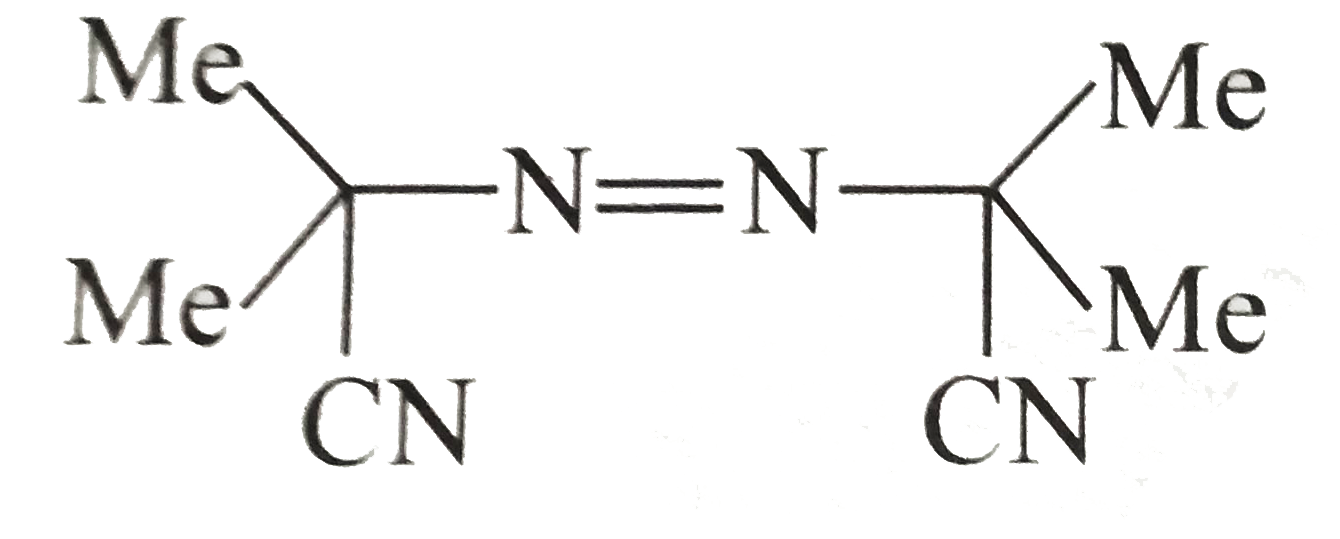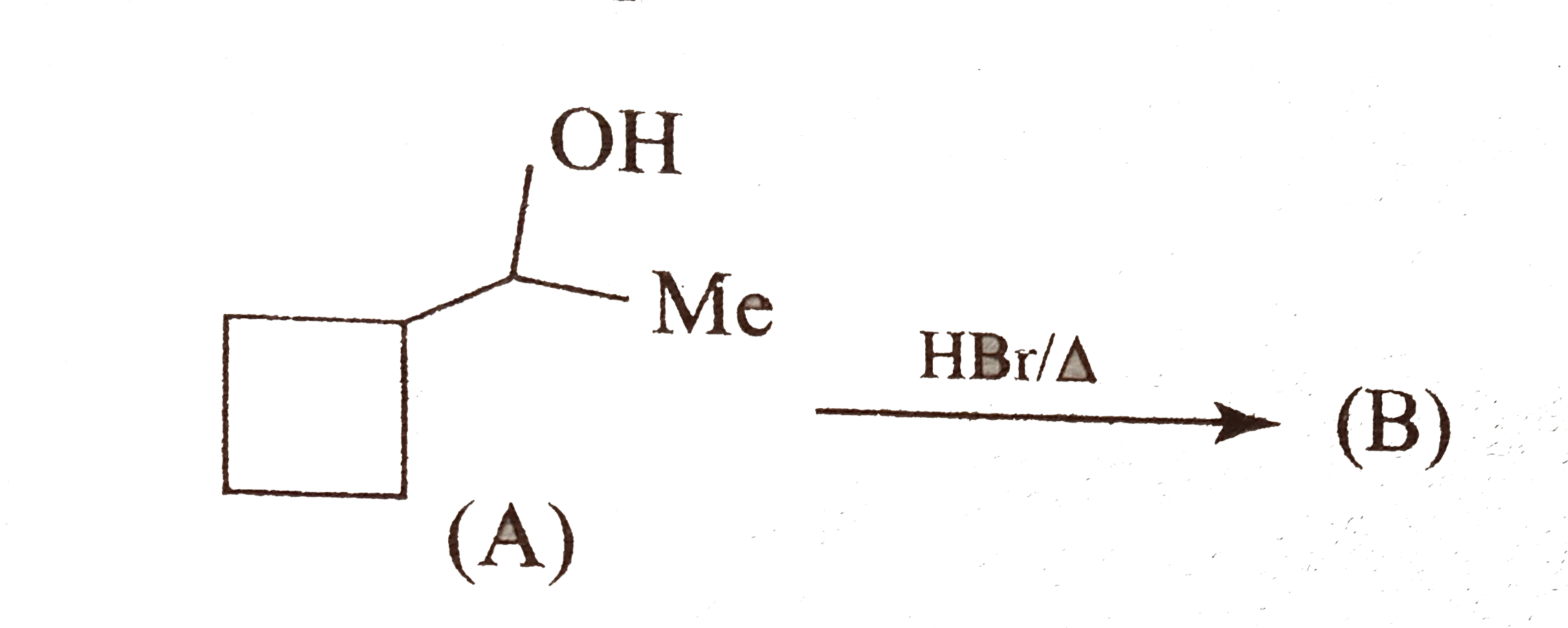Both ionic and free radical mechanism involve in the reaction -
Chlorination of alkane
Williamson’s synthesis
Electrolysis of potassium acetate
Friedel-crafts reaction
The correct Answer is:C
To determine which reaction mechanism involves both ionic and free radical mechanisms, we will analyze the options provided in the question.
1. Understanding Reaction Mechanisms:
- Ionic mechanisms involve the formation of charged species (ions) during the reaction.
- Free radical mechanisms involve species that have unpaired electrons, known as free radicals.
2. Analyzing the Options:
- Option 1: Chlorination of Alkenes:
- In the presence of sunlight, Cl2 dissociates into free radicals (Cl•), which then react with alkenes. This mechanism primarily involves free radicals and does not involve ionic intermediates.
- Option 2: Friedel-Crafts Reaction:
- This reaction involves the formation of a carbocation (ionic species) when an alkyl halide reacts with AlCl3. It does not involve free radicals, as the mechanism relies on the formation of a carbocation.
- Option 3: Electrolysis of Potassium Acetate (Kolbe Electrolysis):
- In this reaction, the acetate ion (CH3COO-) can generate free radicals (CH3•) during electrolysis. The reaction also involves ionic species, as the acetate ion is negatively charged. This reaction involves both ionic and free radical mechanisms.
- Option 4: Other Reactions:
- Other options may also involve either ionic or free radical mechanisms, but they do not combine both.
3. Conclusion:
- The only reaction that involves both ionic and free radical mechanisms is the Kolbe Electrolysis of potassium acetate. Therefore, the correct answer is Option 3.
Final Answer:
The reaction mechanism that follows both ionic and free radical mechanisms is the Kolbe Electrolysis of potassium acetate.
---
- Ionic mechanisms involve the formation of charged species (ions) during the reaction.
- Free radical mechanisms involve species that have unpaired electrons, known as free radicals.
- Option 1: Chlorination of Alkenes:
- In the presence of sunlight, Cl2 dissociates into free radicals (Cl•), which then react with alkenes. This mechanism primarily involves free radicals and does not involve ionic intermediates.
- Option 2: Friedel-Crafts Reaction:
- This reaction involves the formation of a carbocation (ionic species) when an alkyl halide reacts with AlCl3. It does not involve free radicals, as the mechanism relies on the formation of a carbocation.
- Option 3: Electrolysis of Potassium Acetate (Kolbe Electrolysis):
- In this reaction, the acetate ion (CH3COO-) can generate free radicals (CH3•) during electrolysis. The reaction also involves ionic species, as the acetate ion is negatively charged. This reaction involves both ionic and free radical mechanisms.
- Option 4: Other Reactions:
- Other options may also involve either ionic or free radical mechanisms, but they do not combine both.
- The only reaction that involves both ionic and free radical mechanisms is the Kolbe Electrolysis of potassium acetate. Therefore, the correct answer is Option 3.
The reaction mechanism that follows both ionic and free radical mechanisms is the Kolbe Electrolysis of potassium acetate.
Topper's Solved these Questions
- BOOK - MOTIONCHAPTER - HYDROCARBON EXERCISE - Exercise - 2 (Level-I)29videos
HYDROCARBON
- BOOK - MOTIONCHAPTER - HYDROCARBON EXERCISE - Exercise - 314videos
HYDROCARBON
- BOOK - MOTIONCHAPTER - HYDROCARBON EXERCISE - QUESTIONS6videos
HYDROCARBON
- BOOK - MOTIONCHAPTER - GRIGNARD REAGENTEXERCISE - EXERCISE-216videos
GRIGNARD REAGENT
- BOOK - MOTIONCHAPTER - IONIC EQUILIBRUIMEXERCISE - Exercise -4 (Level -II)14videos
IONIC EQUILIBRUIM
Similar Questions
Explain free radical mechanism in detail for the preparation of addition polymers.
View SolutionAn alkyl halide is reduced to the corresponding alkane by tributyl stannane (C4H9)3SnH and by a free radical menchanism in the presence of an initiator, an azo compound

that breaks down to N2 and a radical. Give the mechanism of the reaction.View Solution
Knowledge Check
- Question 1 - Select One
Free radicals are involved in causing
AneurodegradationBAIDSCcoldDdecreased immunity - Question 2 - Select One
Free radicals have ___.
Abonded electronsBunpaired electronsCpaired electronsDno electrons - Question 3 - Select One or More
The photochemical chlorination of paraffins occurs by a free radical mechanism. From the following set of reactions pick out the chain propogation steps.
ACl2hv−−→2ClBCH4+Cl→CH3+HClCH3C+Cl2→H3C−Cl+ClDCl+Cl→Cl2
Give the major product and mechanism involved in the following reaction.
 View Solution
View SolutionWrite the steps involved in the free radical mechanism in polymerisation of ethylene. OR
Explain the free radical mechanism for the polymerisation of ethylene.View SolutionWhat is the mechanism involved in the halogenation reaction of alkanes?
View SolutionWrite the free radical mechanism for the polymerisation of ethene.
View SolutionWrite the free radical mechanism for the polymersation of ethene.
View Solution

